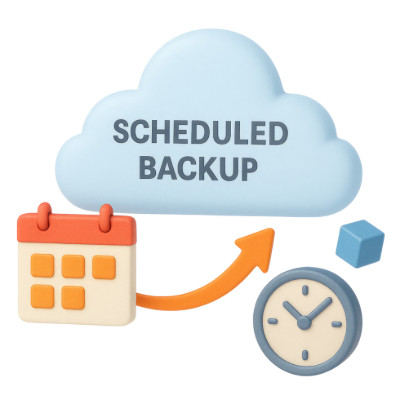Solid teamwork is what allows businesses to thrive, but there are also many reasons this collaboration can go somewhat awry. It can be challenging to get a team back on track, but it’s not impossible. Here are four ways collaboration can go horribly wrong, but four ways you can help your collaborative efforts resume.
Accucom Blog
Do you feel sluggish, achy, or just plain tired after a long day of sitting? A simple change to your workday could be the key to improving your health and boosting your well-being: the standing desk.
The popularity of standing desks is growing for good reason. They are an easy way to combat the negative effects of a sedentary lifestyle. Standing for even part of your day can make a big difference, and here are five of the top benefits you can expect.
Security is one part of your business that you absolutely cannot ignore. It’s not a matter of if you will experience a cyberattack, but when, and you want to do all you can to be ready for it when it comes. We recommend you prepare by working with professionals to take the fight to cyberthreats. Here are three ways we’ll help your business stay safe from the many cyberthreats out there.
Are you one of those people who just locks their computer and goes home at the end of the day? Doing so ignores an important element of owning a computer, which is powering it down fully from time to time. Performing a full shutdown can help you avoid some common computer problems that will drag you down throughout the workday.
Let me ask you something: what do you do when one of the many, many little icons on your dashboard suddenly lights up? Chances are pretty good that some part of you starts adding up the anticipated costs of whatever repairs are going to be necessary. It’s stressful and can easily throw off your day, especially if that light is immediately followed by your car breaking down.
So, if this experience is so stressful, why use the exact same strategy where your business’ technology is concerned?
How often do you run backups of your business’ data infrastructure? If the answer is “Once a day,” or even “What’s data backup?” we need to talk. In reality, regular backups—when you take multiple backups throughout the workday—are the key to staying ahead of the dangers your business will face over the course of its life.
Cyberattacks are all over the place, and they complicate running a business to no end. If your business is jonesing for a solution, consider upgrading your cybersecurity structure with zero-trust policies and procedures. Here’s how zero trust can make your business more formidable against the constant onslaught of cyberthreats.
There’s no secret that things are getting contentious all over. Costs are up, morale is down, and throughout the entire workforce there is a level of uncertainty that they will be able to prosper the same way their parents and grandparents were able to. This fear is exponential for business owners. Even the most optimistic people are finding cracks in well-laid plans. In today’s blog, we will discuss how to arrange your IT to get the most out of your business.
With how ingrained technology is in your business’ operations, it’s no wonder it causes so many problems. At the heart of it all, however, issues with technology and the fear of these assets breaking down usually leads to change for the better. Let’s look at how you can transform your tech failures into wins for both your business and its customers.
Data backup can be a bit nerve-wracking to implement, especially as a small business owner with limited knowledge of business IT solutions. One best practice we like to plug for SMBs is the 3-2-1 backup rule, which sounds more complicated than it really is. Today, we’re exploring the details of this approach and how it can change the way you think about backup and disaster recovery as a whole.
Google's recent decision to push more remote staff back to the office, with potential consequences for non-compliance, feels like a step backward in the evolution of workplace flexibility.
While the tech giant cites the importance of in-person collaboration and a stronger company culture, this rigid stance overlooks the significant benefits and increasing acceptance of remote work, especially for small and medium-sized businesses (SMBs).
Let's talk about something that might not be the most glamorous topic, but is absolutely vital to the health and survival of your business: data backups.
Think of your business data as the lifeblood of your operations. It includes everything from customer records and financial information to crucial project files and intellectual property. Now, imagine a scenario where this lifeblood suddenly stops flowing. What would happen?
Running a business is like managing a bunch of moving parts with relationships with employees, customers, operations, and, of course, vendors. Vendors supply your business with the products and services that keep things running, but if you’re not careful, those relationships can turn into time and money pits. So, how do you make vendor relationships work in your favor? Here are some smart ways to get the most out of them without unnecessary headaches.
By now, you’ve heard us discuss how data backup is extremely important for every organization. We try to spread awareness of the negative impacts to a business that doesn’t have a comprehensive backup plan in place. Fortunately, data backup has come a long way in the past decade, making it easier, faster, and way more reliable. Let’s take a look at how things have changed in data backup.
How much does your business depend on its mobile technology? More likely than not, you have smartphones implemented on your network in some capacity, whether it’s for productivity or security. That said, you need to have a strategy in place to manage and maintain them, which is where mobile device management comes in.























